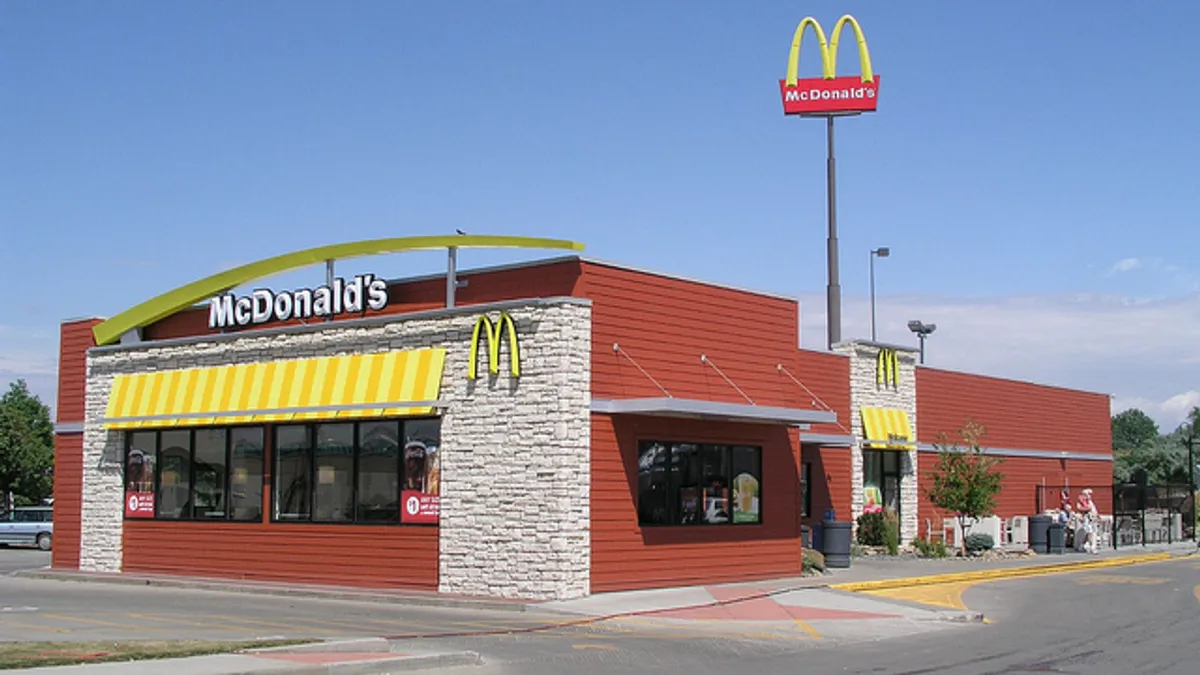Dive Brief:
- McDonalds intends to move into the delivery market to restart U.S. sales, Bloomberg reported Wednesday.
- As 75% of restaurant locations are central to a potential delivery market, the fast-food giant has an edge on ease and speed of delivery. The fast food giant has consulted such food delivery experts as Foodpanda, Uber, and Postmates, no final partnership decisions have been made.
- Mobile ordering and payment is also on the U.S. menu as part of its effort to provide an "Experience of the Future."
Dive Insight:
Meal delivery programs, whether from restaurants or services such as Blue Apron, have grown in popularity as cultural changes grow and time availability shrinks. Now McDonald's, an established expert in speedy preparation, is expanding into the delivery market. How well-positioned is it to do so?
A successful meal delivery system depends on its supply chain, an area where McDonald's has had to excel to meet demand. From 2010 through 2016, the company has received a top 10 spot in Gartner's Supply Chain Top 25, earning second place for the third year in a row. A horizontal supply chain in which close relationships between buyers and suppliers is encouraged, and suppliers are often long-term, valuable members of the chain. This contributes greatly to the chain's success. It's a sure bet that McDonald's and its supply chain team will have full alignment in place when the new delivery program begins.
And yet, as the Bloomberg article notes, this shift to a mobile order and delivery model presents with it risks; namely, who will do the delivery? Will McDonald's build out their own shipping fleet following in the footsteps of Amazon, or perhaps outsource the service, as the article implies?
Combine this question with McDonald's statement that they are also targeting a boost in operating margins from a high 20 percent range to mid-40 percent. McDonald's is a $31 billion company with nearly 37,000 restaurants that employ 420,000 people. Given that the business model is so entrenched with tight profit margins and little variability, how might a company of that size so radically alter its operating costs? Perhaps the red-haired little girl down the street knows the way.













